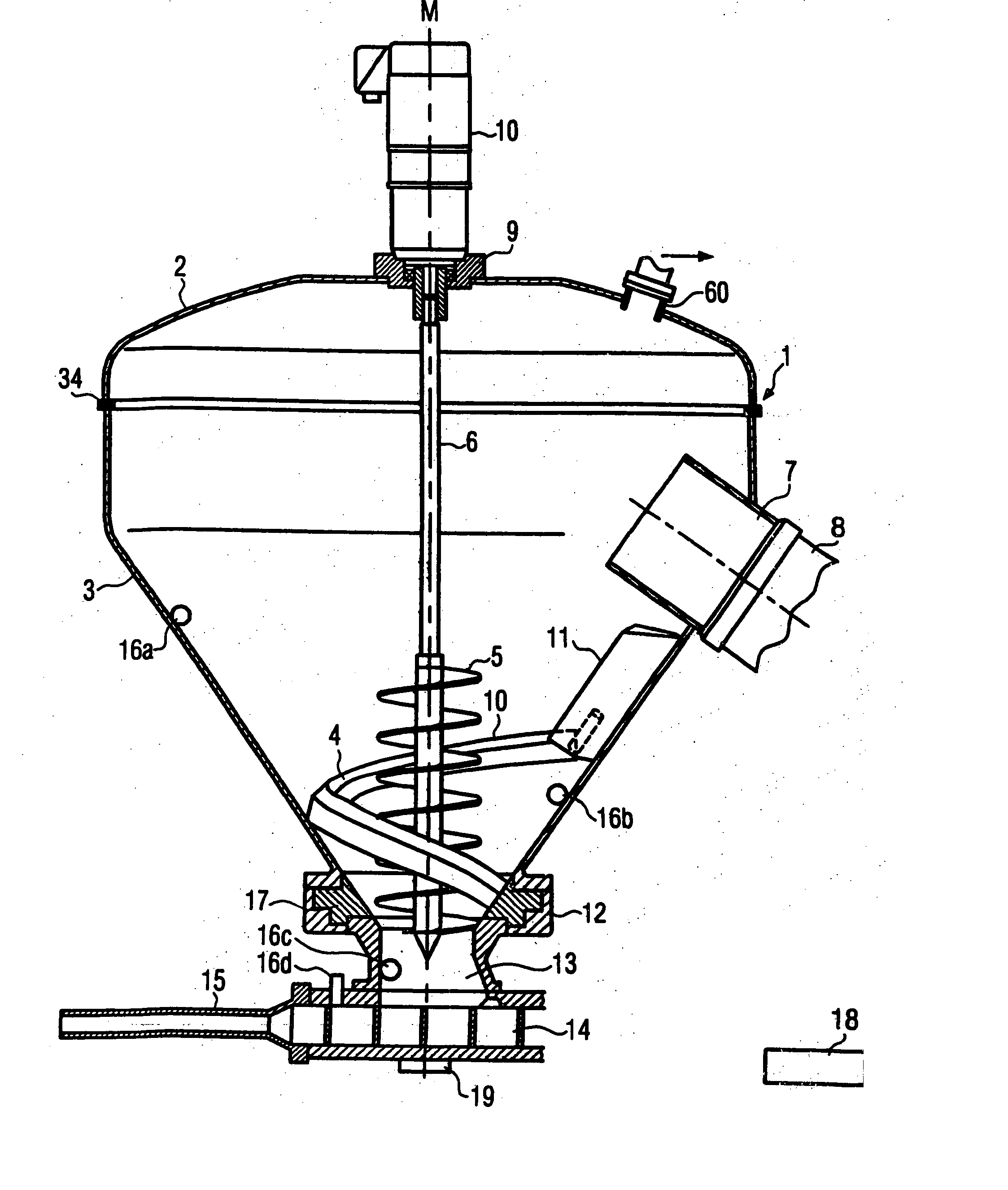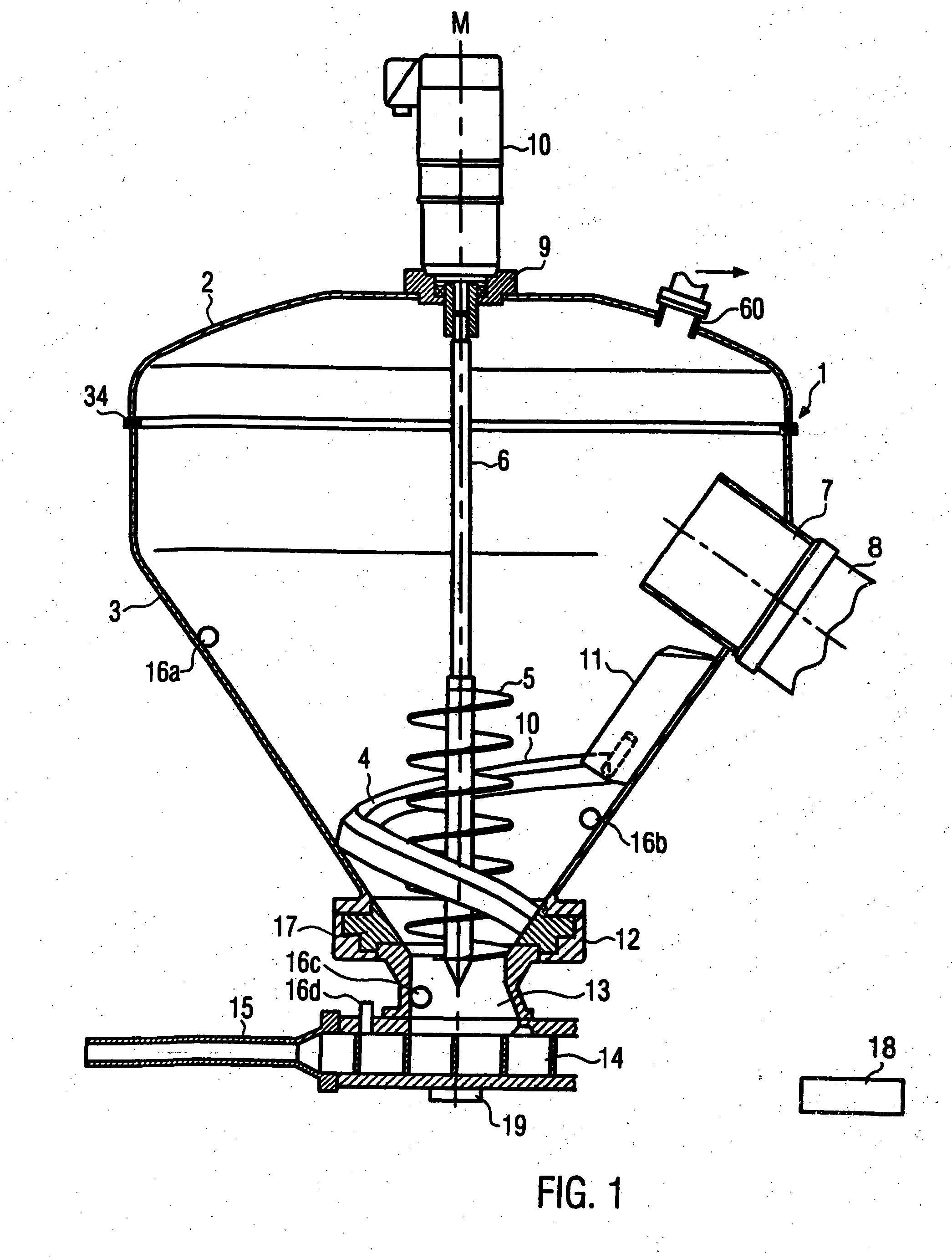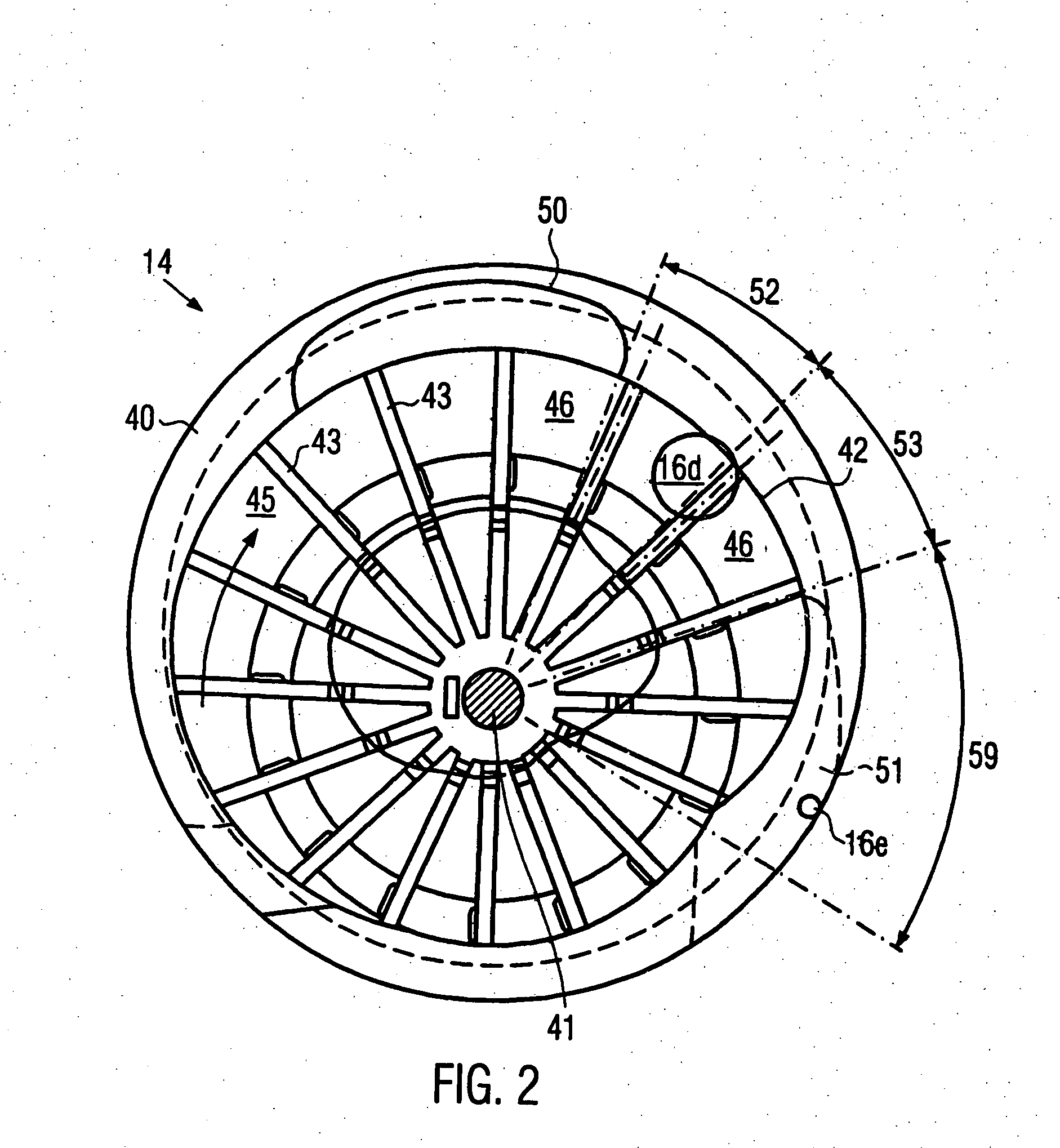Filling machine and method of feeding paste masses from a hopper into a conveying mechanism
a filling machine and conveying mechanism technology, applied in the field of filling machines and charging paste masses, can solve the problems of inability to charge the conveying mechanism chamber, inability to accurately calculate the portion weight, and the chamber deterioration of the conveying mechanism, so as to achieve the effect of avoiding “over-conveying” which might be detrimental to the mass and substantially speeding up
- Summary
- Abstract
- Description
- Claims
- Application Information
AI Technical Summary
Benefits of technology
Problems solved by technology
Method used
Image
Examples
Embodiment Construction
[0023]FIG. 1 shows an embodiment of a filling machine according to the disclosure. The filling machine according to the disclosure comprises a hopper 1, preferably a vacuum hopper 1, which comprises a lid 2 and a hopper section 3 which runs at least partly conically. The hopper section 3 and the lid 2 are connected together vacuum-tight via a seal 34, e.g, a sealing ring. The hopper 1 is in this embodiment a vacuum hopper in which a negative pressure can be produced. The vacuum hopper 1 comprises an inlet 7 for feeding a paste mass from a reservoir which is not illustrated via the feed tube 8. The hopper 1 also comprises at the lower end, i.e. at the end opposite the lid 2, an outlet region 13 for the paste mass. At the outlet region 13, a conveying mechanism 14 is arranged which conveys the paste mass from the hopper 1 into a filling tube 15. A vacuum pump 19, which is only illustrated schematically, is used to produce a negative pressure in the conveying mechanism or in the convey...
PUM
 Login to View More
Login to View More Abstract
Description
Claims
Application Information
 Login to View More
Login to View More - R&D
- Intellectual Property
- Life Sciences
- Materials
- Tech Scout
- Unparalleled Data Quality
- Higher Quality Content
- 60% Fewer Hallucinations
Browse by: Latest US Patents, China's latest patents, Technical Efficacy Thesaurus, Application Domain, Technology Topic, Popular Technical Reports.
© 2025 PatSnap. All rights reserved.Legal|Privacy policy|Modern Slavery Act Transparency Statement|Sitemap|About US| Contact US: help@patsnap.com



